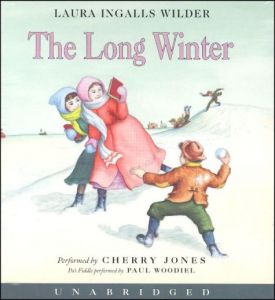It’s snowing outside. Little specks and flecks. Not much volume or thickness, but it’s snow, and it’s pretty outside, and it’s the MLK holiday, to boot, and, well, I wanted to go outside for a walk. So I did.
Bundled and layered up as I was, I didn’t put on gloves. It wasn’t that cold outside that I’d freeze, or anything. Alas, I also hadn’t seen, when getting dressed to go out for a walk, that I’d pivot and instead of going for a walk around the lake, I’d stomp around in the thin copse of woods near my home, crunching and cracking dry branches with my feet. (It’s kinda like au natural bubble-wrap popping.) I also hadn’t foreseen I’d also be moving some branches around so they’d be positioned to better help with slowing the water runoff to the nearby lake.
It was fun. I was in my own play zone. The light snow and lack of green growth made it easy to spot small- and medium-sized dead branches and move them into position.
I was getting a little cold: I had noticed that, but plowed on. I was, after all, having fun.
But then my fingers started feeling cold and numb. I knew I’d been out a little over an hour, so I headed back in … but not before stopping at my car to brush the accumulated snow off it. I noticed then my hands were feeling really cold, and it was definitely time to go inside.
I came in, dropped my wet coat and wrist warmers on the ground, kicked off my hiking boots and collapsed, quite tired, onto my couch. That’s when I noticed how really, really cold my hands were. They were tingling. They were a bit numb, and they were all I could think about. I tried warming my cold-cold fingers in my arm pits and eventually under some running hot water.
It was humbling how long it took for my fingers and hands to warm back up, despite me sitting in the comfort of my warm home, with layers of warm and luxe wool clothing on, with hot water and other amenities within reach. Eventually, they did.
But while they were still cold and tingly and the dominant thought reigning in my head was, “OMgoodness! My fingers, my hands … they’re so cold!” and while I was aware of the many comforts and conveniences in my life, my mind reeled when thinking of most of human history, especially those living in colder climates.
How did they do it? How did someone in a nomadic tribe start a fire when their hands were numb with cold, the mosses and grasses needed to start a fire wet (maybe they carried dry grass for just such occasions) and the wind howling and bitter?
How did they cook, or clean, or make camp when they’d been cold all day and had nothing but a colder night ahead? And a cold tomorrow and more unrelenting cold tomorrows on the horizon?
How did a traveler untack a horse, wet and cold itself, with fingers numb and frozen after a long ride in the snow?
How did a farmer fetch or pump water by hand to bring to penned farm animals in the middled of winter?
I get that people living in very cold places tend to have pretty warm clothing and killer mittens, but sometimes you need your fingers — out. They can’t always stay nice and cozy inside your mittens. Lots of doing and things and chores and tasks require fingers. And if it’s super cold, snowy, wet and/or windy and you need to be outside and do things outside, what do you do? Not “you” as in you and me with our HotHands hand warmer packets or USB-powered warming vests, but the collective Them–the people who lived in times before cars and engines and central heat.
the long winter
 A few years ago while out on a walk, I came across a Little Free Library, and in it was The Long Winter by Laura Ingalls Wilder of the Little House on the Prairie fame and book series. I took it home.
A few years ago while out on a walk, I came across a Little Free Library, and in it was The Long Winter by Laura Ingalls Wilder of the Little House on the Prairie fame and book series. I took it home.
I’d read the books as a young girl and here I was now reading this one book as an adult. It was a nail-biter! The depths of cold they experienced one winter! Cold for the Dakota region!
The beavers were building dams thicker than anything Laura’s father had ever seen. And an Indian man had come to town in early October to tell the town’s leaders the winter ahead would be particularly harsh.
Blizzard upon blizzard blew through the town for almost seven months. The trains bringing supplies couldn’t get through, and the train company directors eventually gave up on distributing goods (and food) until the spring weather could thaw out trains frozen on tracks; many people in the town began to go hungry.
Laura’s father — and most people — hadn’t yet put away enough wood for the winter when the first blizzard came in October, and their fuel (and heat) supplies were low. Laura’s father had begun to twist straw to use in lieu of wood–a desperate and difficult measure.
I knew she lived to tell because I’d read her books, but, wow, even as an adult reader, that was a scary experience to read about.
And what of the homeless people today, or the people whose jobs have them out in the cold, hour after hour? I feel for them. I do, I do! I so appreciate the people today who–hopefully layered with warm clothing–work outside in the cold. Whether delivering the mail, repairing power lines or tending to animals on small farm on bitter cold days, thank you for what you do to make my life–our lives–easier.
And bundle up!
Photo of nomadic man from ArticImages.com.




